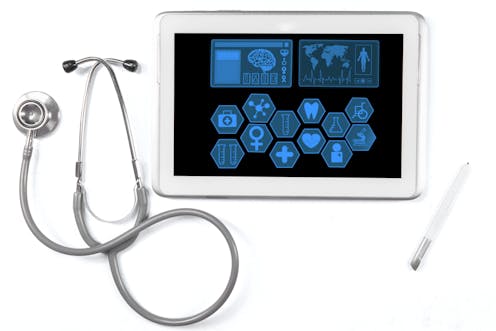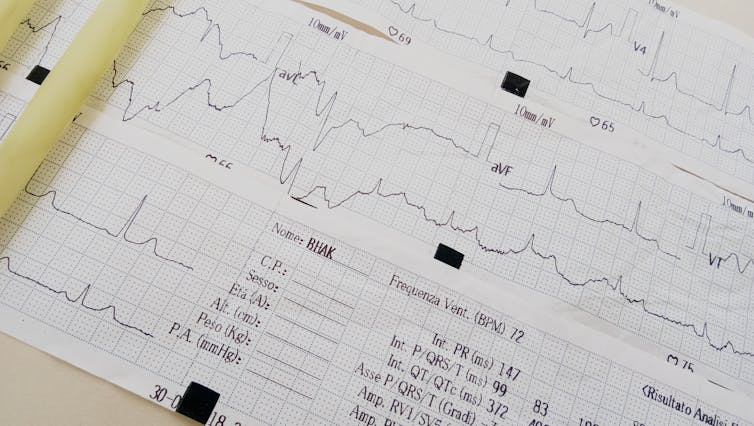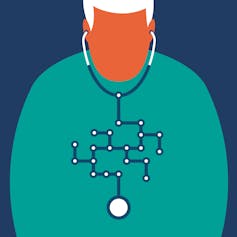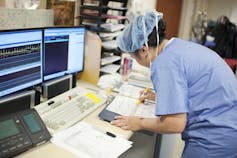We designed an experimental AI tool to predict which COVID-19 patients are going to get the sickest
Researchers from New York University are designing AI algorithms to help predict COVID-19 outcomes.

COVID-19 doesn’t create cookie cutter infections. Some people have extremely mild cases while others find themselves fighting for their lives.
Clinicians are working with limited resources against a disease that is very hard to predict. Knowing which patients are most likely to develop severe cases could help guide clinicians during this pandemic.
We are two researchers at New York University that study predictive analytics and infectious diseases. In early January, we realized that it was very possible the new coronavirus in China was going to make its way to New York and we wanted to develop a tool to help clinicians deal with the incoming surge of cases. We thought predictive analytics – a form of artificial intelligence – would be a good technology for this job.
In a general sense, this type of AI looks at existing data to find patterns and then uses those patterns to make predictions about the future. Using data from 53 COVID-19 cases in January and February, we developed a group of algorithms to determine which mildly ill patients were likely become severely ill.
Our experimental tool helped predict which people were going to get the most sick. In doing so, it also found some unexpected early clinical signs that predict severe cases of COVID-19.
The algorithms we designed were trained on a small dataset and at this point are only a proof-of-concept tool, but with more data we believe later versions could be extremely helpful to medical professionals.

How we did the work
To build this tool, we first needed data. We teamed up with an infectious disease specialist, Xiangao Jiang, in Wenzhou, Zhejiang, China. When we started working on this in early January, Wenzhou had the largest outbreak outside of Hubei, of which Wuhan is the capital. Between January and February, Dr. Jiang’s team collected and shared with us information from 53 COVID-19 patients at two hospitals. We got data on symptoms like fever, cough and diarrhea, lab values like blood cell counts, kidney function, inflammatory markers and vital signs and also X-rays.
Before we could start building the algorithms, we needed to wait until all the patients recovered or died so that we would know the final outcome of their cases. Thankfully, the Wenzhou outbreak wasn’t bad and by mid-February all the patients, even those with severe cases, had recovered.
From this data, we developed a set of algorithms that use predictive analytics to identify early symptoms in the body of a person with COVID-19. The algorithms then look for patterns and figure out which of those symptoms correlate with severe cases of COVID-19.

What did you find?
For the 53 people in our study, the algorithms predicted with an accuracy of 70-80% the people who became extremely sick. That is pretty close to other uses of AI in medicine. We are now conducting further validations with large datasets.
This ability to predict which patients are going to decline could be very useful for clinicians, but the symptoms the AI identified to make these predictions could also provide valuable information to researchers.
Our predictive models found that slightly high levels of liver enzymes called ALT, elevated levels of hemoglobin – that is, red blood cells – and body aches were the strongest predictors of oncoming severe COVID-19. In a normal setting, doctors wouldn’t be concerned by slight elevations in ALT and hemoglobin, but it appears these are important signs during a coronavirus infection.
Since our study came out, other medical researchers have corroborated what our algorithms suggested. In one study, researchers found that slightly high liver enzyme levels may correlate with worsened COVID-19 outcomes.
Additionally, higher hemoglobin levels are known to increase the risk of blood clots and blood clots are proving to be a significant and mysterious cause of death for coronavirus patients.

Why it matters
COVID-19 is a new disease, one that doctors haven’t seen before and signs of an impending severe case are hard to spot. AI, which can recognize many elusive patterns simultaneously, is the perfect tool to help doctors identify high–risk patients early. This gives them time to better prepare for these cases and could save lives.
Additionally, the symptoms that the AI algorithms found to be important suggested that SARS-CoV-2 was affecting many more parts of the body than just the lungs. This ability to spot what symptoms are important could help doctors as they search for the many ways the virus attacks the body.
What’s next
It’s important to recognize the limitations of AI. Before a tool like this is put into use we need to give our system much more data to learn from. Since the AI was only trained on a small number of patients in one setting, its accuracy is limited to that setting. We are in the process of getting more data from other sources and will use this data to make the algorithms are more accurate and broadly applicable.
While the AI we designed is only a first test, the results are extremely encouraging. We believe AI has a role to play in fighting this pandemic and hope to soon put our system to work helping doctors on the front lines.
[You need to understand the coronavirus pandemic, and we can help. Read The Conversation’s newsletter.]
The authors do not work for, consult, own shares in or receive funding from any company or organization that would benefit from this article, and have disclosed no relevant affiliations beyond their academic appointment.
Read These Next
Flat Earth, spirits and conspiracy theories – experience can shape even extraordinary beliefs
Conspiracy thinking, supernatural beliefs and pseudoscience can seem impervious to evidence. An anthropologist…
Google plans to power a new data center with fossil fuels, yet release almost no emissions – here’s
To reduce emissions put into the atmosphere, Google is using carbon capture and sequestration. But not…
We are hardwired to sing − and it’s good for us, too
Modern science is increasingly validating what many traditions have long held: Singing and chanting…




